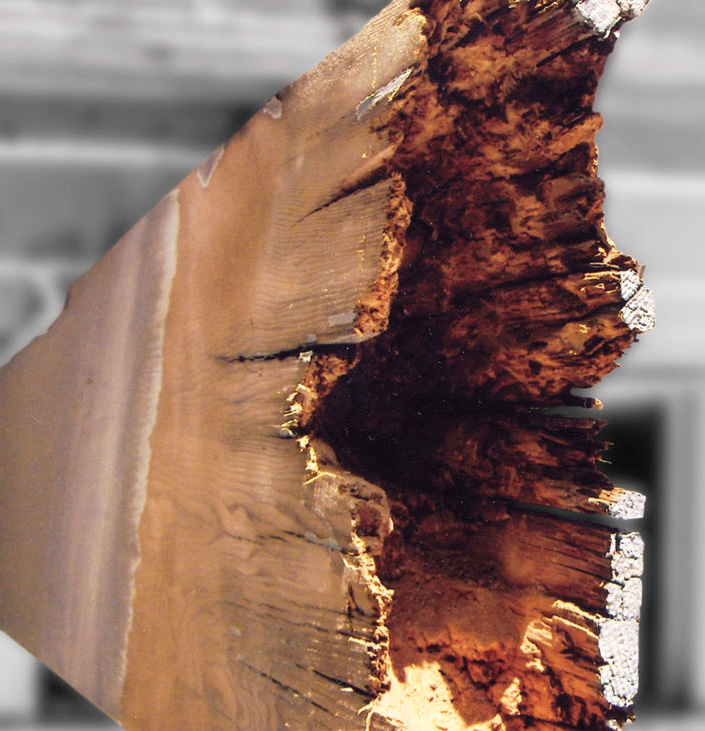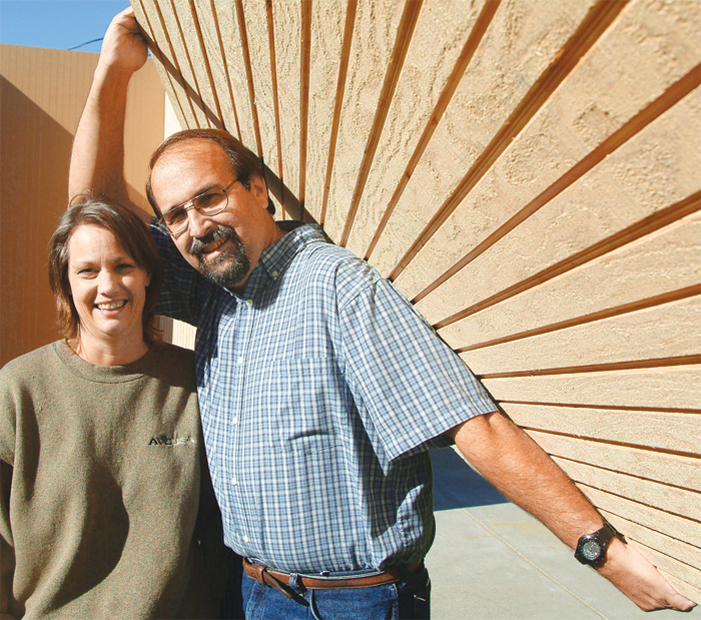Troubleshoot to Beat the Rain - Page 2
 |
Number two: take photos. Document anything that looks questionable, or might require an expert's opinion. If you're unsure, it's best to consult with a professional with experience in construction.
On one of his recent calls, Wilson discovered an unusual problem with a client's installation of relatively new siding. "The client sent me a picture of the house in the morning, and the effects of weather from the night before when it was raining," he explains.
"As the water was evaporating, the sun was coming through the siding…You could see where every stud was. It looked like a skeleton, showing all the hot spots and soft spots. He had called because fungus and mushrooms were growing on the outside of his wall…it was growing through the siding."
Seals and caulking are extremely important on Eichlers, and in the case Wilson describes, apparently the person who performed the siding install "didn't prime the overlap, allowing air to get behind the siding and the building paper."
 |
Number three: contact an expert and schedule repairs promptly. Consulting with an experienced professional can protect you, and save you thousands of dollars in the long run.
"We had a phone call, out of our area, where somebody needed immediate help. They had a tree that fell almost onto the beam in the atrium," Carey says. "A good precaution is to keep things off your roof, keep things cut back, keep things draining off your roof, and keep mature landscaping trimmed back, especially when the ground is getting super-saturated."
Number four: safeguard your Eichler from future wet-weather issues. Wrap up repairs promptly, to protect your home before the next rainy season.
Another issue Carey points out is termites. "We recommend tenting after we work, especially if we're bringing wood in," she says, as a precaution against termites. "Wood now is fairly clean, but better safe than sorry; so we recommend tenting after framing at some point, since tenting would cover all of it."
Wet weather can also bring ants, "which can make their way into the tiny crevices in between the foundation and framing," Carey explains.
 |
|
|
"Ants are just there, there's not a lot you can do, especially if people don't want to spray. They love any kind of moisture, so make sure dirt is pulled back from exterior walls of the house. Our recommendation is four to five inches pulled away, and that definitely blocks their path a little bit."
Eichlers are made of wood, as Carey points out, and that reality is at the core of most water-related issues. "Understand, especially for new homeowners, since your Eichler is all wood, water is going to affect your house more than a 'regular type' house," she says.
"Try to be proactive, and do a walk-thru at least twice a year; have that be a part of your Fall-Winter and Spring-Summer checklist for your house."
While embarking on rain-proofing your Eichler, keep in mind the importance of keeping seams properly caulked and sealed, advises Wilson. "Where most of my jobs are, there are no eaves, meaning those are areas that are not protected. Overhangs protect the house from the weather and sun, like an umbrella."
Lastly, while being vigilant and proactive are important, "It's not the end of the world if something happens," quips Carey.




